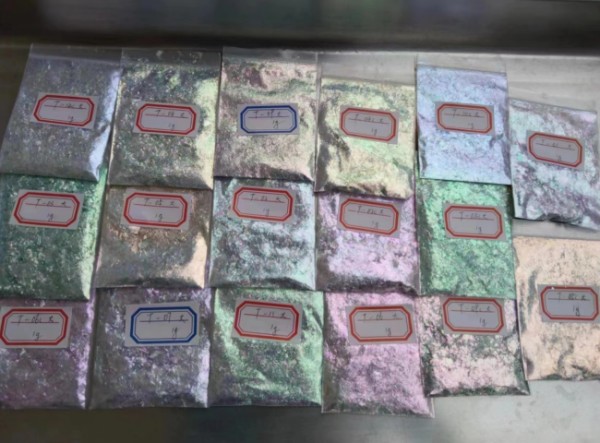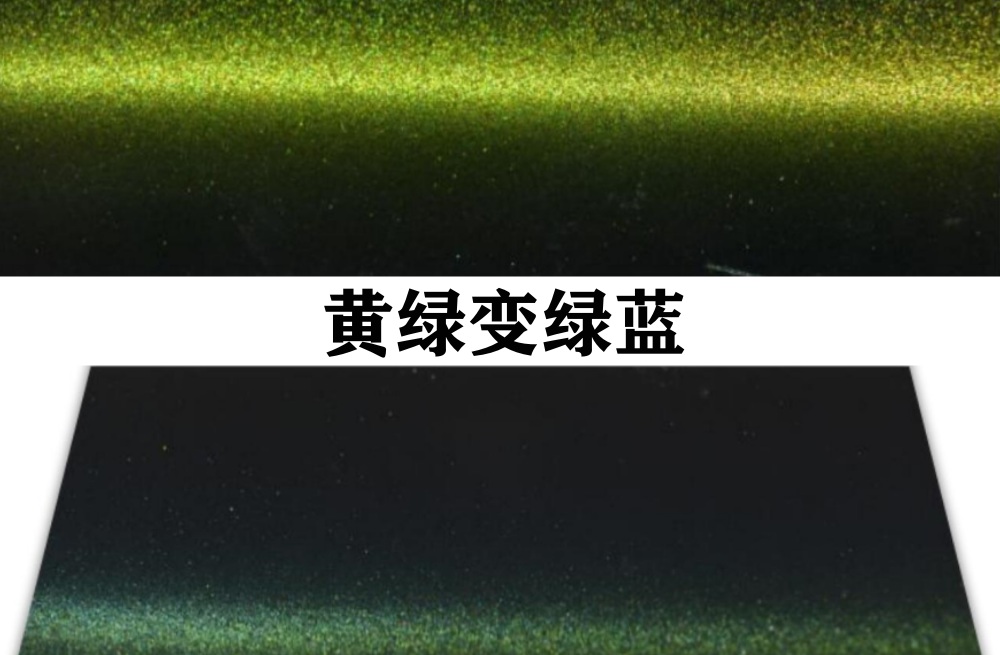Translation: The optical color-changing phenomenon is a relatively special phenomenon that spans the fields of physics and chemical technology. Before the issuance of the new version of the RMB, it was not well-known to the public. Now it is gradually becoming well-known. When we take a 100-yuan RMB to go shopping, the salesperson usually shines a light on the bill to determine its authenticity. China first used optically variable ink to prevent counterfeiting on the 100-yuan and 50-yuan RMB, which also reflects the trend of using high-end anti-counterfeiting materials in the anti-counterfeiting industry. Due to its easy recognition, difficulty to imitate, and good sensory effects, optically variable ink is favored by governments worldwide for anti-counterfeiting of currency and is naturally much more expensive than ordinary ink.
Below, we will provide a detailed explanation of the anti-counterfeiting color-changing principle of optically variable ink:
The color-changing effect of optically variable ink is produced by the optically variable pigments in the ink, and the optical color-changing film fragments are the main components of the optically variable pigments, which have specific spectral characteristics. The optical color-changing film is produced using vacuum coating technology, which uses the principle of multiple layers of thin film interference of various refractive index materials, and a specific film structure, and fine-tunes the ratio, thickness, and order of different film layers in sequence on the same carrier. When observed from different angles, it will show different colors, and the color-changing pigments will also change with the angle. The following is a schematic diagram of a multi-layer optical film structure (based on thin film optics theory), used to analyze the changes in reflected light and related physical quantities (the amplitude vector of the reflected light of the incident light on each layer of thin film interface): r1, r2 e -2iδ1, ..., r k+1 e -2i (δ1 + δ2 + ... + δk), where r1, r2, ..., r k+1 are the functions of the refractive index N0 and N1, N1 and N2, ..., Nk+1 and Nk on both sides of the interface, and are called reflection coefficients. δ is the phase difference between the reflected light: δ1 = 2π/λ•N1d1cosθ1, ..., δk = 2π/λ•Nkd kcosθk where λ is the wavelength of the incident light, d1 and dk are the thicknesses of the first layer of thin film and the kth layer of thin film (the thickness of the film is in the nanometer range), θ1 and θk are the angles of incidence of light on the first and kth layers of thin film, respectively (θ1, θ2, ..., θk are determined by θ0, N0, N1, ..., Nk). The reflectivity R of the multi-layer optical film is a function of the reflection coefficients r (i.e., N1, ..., Nk) and the phase difference δ (i.e., λ, θ0, d1, ..., dk).
Based on this, we can analyze the following:
Ⅰ. For a given film structure (shaped as needed), the material N and thickness d of the film layers and the incident medium N0 are all known constants. The surface reflectivity R is only a function of the incident light wavelength λ and incident angle θ0.
Given a value of θ0, we can obtain the reflective spectrum curve of the film system under this θ0 condition. That is, each specific film system has a specific reflective spectrum. This reflective spectrum will change
HiBlueStar
电话:15050450799(微信同号)
© HiBlueStar Sitemap





